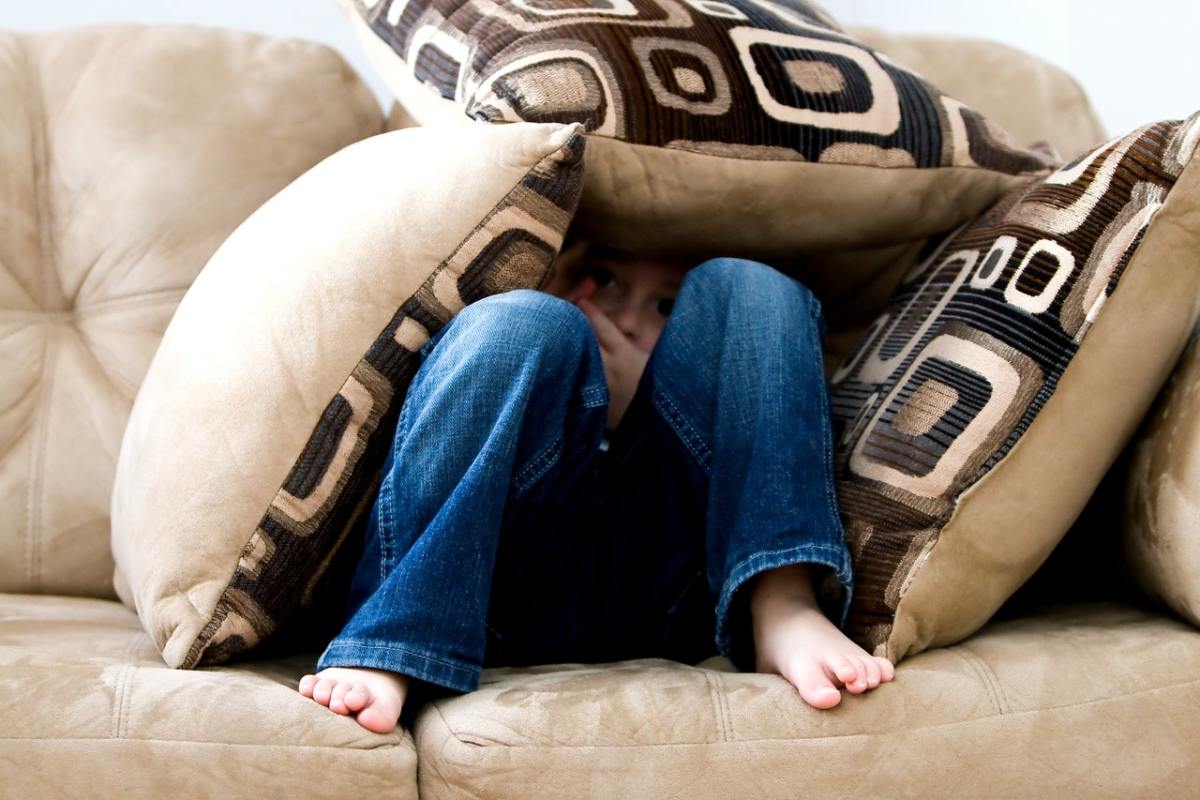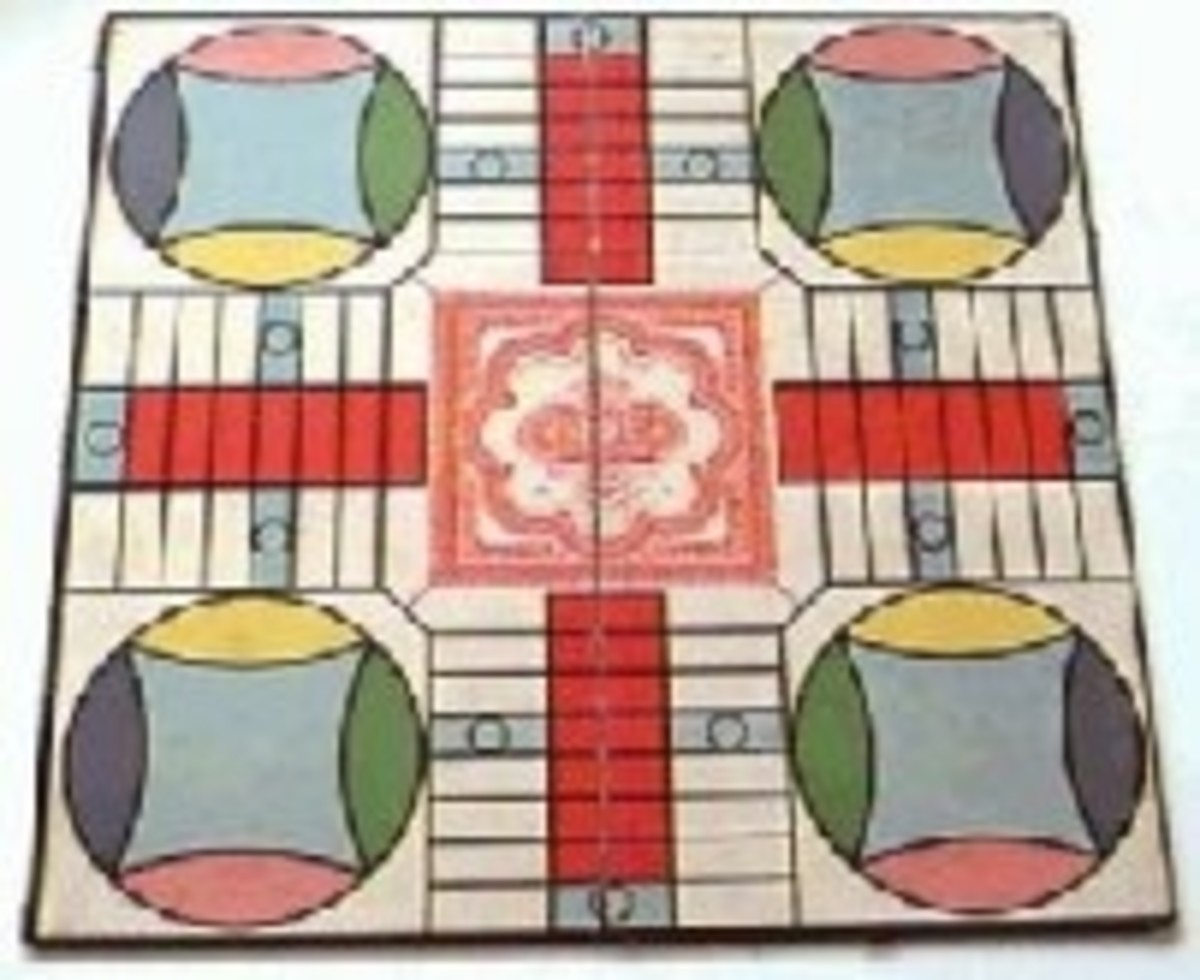ADHD Children: The Benefits of a Great Routine [2023 Update]
Unlocking the Power of Structure: How Routines Transform Lives of Children with ADHD
Did you know that children with ADHD can experience a 30% improvement in their daily behavior and focus when following a well-structured routine? This striking statistic highlights the transformative power of consistent routines for children grappling with ADHD. In today's fast-paced world, where distractions abound, the significance of a structured routine becomes even more pronounced for these young minds.
-
Benefits of a Structured Routine: A well-planned routine offers numerous advantages for children with ADHD. It provides them with a predictable and secure environment, reducing anxiety and helping them to focus better on tasks. This structure is crucial in enhancing their ability to manage time, prioritize tasks, and transition smoothly between activities. By incorporating regular habits and clear expectations, routines can significantly improve the daily life of a child with ADHD.
-
Improving Behavior and Confidence: Regular routines not only streamline daily activities but also foster a sense of accomplishment and self-reliance in children with ADHD. When they know what to expect and feel in control of their day, their behavior tends to become more positive and focused. This improvement in behavior is often accompanied by a boost in self-confidence, as they begin to feel more competent in managing their tasks and responsibilities.
-
Enhancing Family Dynamics: The benefits of a well-established routine extend beyond the individual child, positively impacting the entire family. A predictable schedule reduces morning chaos and evening stress, leading to more harmonious family interactions. Parents and siblings of ADHD children often find that a consistent routine creates a more peaceful and cooperative household environment.
The implementation of a structured routine can be a game changer for children with ADHD. It's not just about keeping them on track; it's about empowering them to navigate their day with confidence and ease, ultimately leading to improved behavior, increased self-esteem, and more positive family dynamics. As we delve deeper into the nuances of creating and maintaining these routines, we uncover the profound impact they can have on the lives of these children and their families.
The Challenge of ADHD in Daily Routines
Children with ADHD often face unique challenges in adhering to daily routines, a struggle that can significantly impact both their personal development and family life. Key difficulties include:
- Difficulty in Maintaining Focus: ADHD children frequently struggle with sustaining attention on sequential tasks, making typical morning routines like getting dressed or preparing for school burdensome.
- Managing Time Effectively: These children often find it hard to grasp time management, leading to delays and frustration during time-sensitive activities such as school preparation or bedtime rituals.
- Overwhelm with Multiple Steps: The multi-step nature of daily activities can be overwhelming for ADHD kids, causing confusion and increasing the likelihood of skipping important tasks.
- Impulsivity and Forgetfulness: Impulsive behaviors and forgetfulness are common in ADHD, leading to erratic adherence to routines and often resulting in essential tasks being overlooked or incompletely done.
- Resistance to Structured Activities: Many children with ADHD show resistance to structured activities, preferring spontaneity, which can disrupt attempts to establish a consistent routine.
Understanding these challenges is crucial for parents and caregivers to develop effective strategies that cater to the unique needs of children with ADHD, aiming to create a supportive and structured environment that can significantly enhance their daily functioning and overall well-being.

Transformative Impact: How Structured Routines Benefit Children with ADHD
Creating a structured routine can be a game-changer for children with ADHD. Let's explore how routines can significantly enhance their focus, behavior, and overall well-being:
-
Improved Focus and Concentration: ADHD children often struggle with maintaining attention. A well-defined routine reduces uncertainties, providing a predictable framework that can help these children focus better. For instance, knowing that homework time is followed by playtime can encourage a child to concentrate on their studies, as they understand what to expect next.
-
Enhanced Behavioral Regulation: Children with ADHD can sometimes exhibit challenging behaviors due to impulsivity or frustration stemming from unpredictability. Routines establish a sense of order and predictability, which can significantly reduce anxiety and improve behavioral responses. When children know their daily schedule, from wake-up time to bedtime, it provides a comforting structure that can minimize behavioral outbursts.
-
Boosted Self-Esteem and Independence: Successfully following a routine can instill a sense of accomplishment in ADHD children. As they become more adept at managing their daily tasks, their confidence grows. This empowerment can extend beyond the home environment, positively impacting their social interactions and academic performance. Encouraging them to take part in setting up their routine can further enhance their sense of independence and self-worth.
-
Reduced Stress for the Child and Family: Predictable routines can alleviate stress not just for the child, but for the entire family. When each day follows a familiar pattern, parents can also plan and respond more effectively, leading to a calmer household environment. This reduction in daily chaos can improve the quality of family interactions, making home a more peaceful place for everyone.
-
Better Sleep Patterns: Regular routines, especially those around bedtime, can help in establishing healthier sleep patterns. Adequate and quality sleep is crucial for ADHD children, as it directly impacts their mood, behavior, and cognitive functioning. A consistent bedtime routine, including activities like reading or quiet play, can signal to the child that it’s time to wind down, leading to a more restful night.
-
Enhanced Academic Performance: By establishing set times for homework and study, routines can contribute to better academic performance. A structured approach to schoolwork helps ADHD children manage their time effectively, leading to improved focus during study sessions and, consequently, better grades and school experiences.
Incorporating these elements into the daily life of a child with ADHD can have transformative effects, leading to a happier, more balanced, and productive lifestyle. As parents and caregivers, understanding and implementing a routine tailored to the child's needs is a powerful tool in supporting their growth and development.
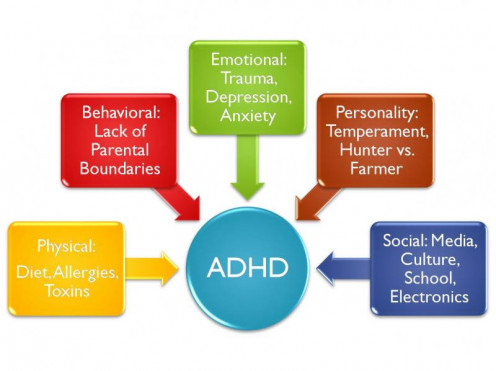
Harmonizing Family Life: The Impact of Structured Routines on Families with ADHD Children
Incorporating a structured routine into the daily lives of children with ADHD can have profound benefits for the entire family. These benefits can be summarized in the following points:
-
Enhanced Family Harmony: When a child with ADHD follows a consistent routine, it reduces daily conflicts and stress. This predictability in daily activities fosters a sense of calm and order within the household. This is particularly beneficial for families where the unpredictability associated with ADHD can lead to chaotic and stressful environments.
-
Improved Communication and Cooperation: A set routine encourages better communication and cooperation among family members. When everyone knows what to expect and what is expected of them, it becomes easier to work together and support each other. This improved interaction can strengthen familial bonds and create a more supportive and understanding home environment.
-
Increased Independence for the Child: With a structured routine, children with ADHD learn to manage their time and responsibilities more effectively. This independence not only boosts their self-esteem and confidence but also eases the burden on other family members who might otherwise feel the need to constantly supervise or intervene.
-
Better Time Management for the Whole Family: A well-planned routine helps in allocating time more efficiently for various activities like homework, family time, and relaxation. This means less rushing and fewer last-minute scrambles, leading to a more relaxed and enjoyable family life.
-
Consistent Bedtimes and Mealtimes: Regular bedtimes and mealtimes are essential for children, especially those with ADHD. A routine ensures that these crucial aspects of daily life are maintained, which can improve sleep patterns and overall health for the child, thereby positively affecting the mood and well-being of the entire family.
-
Shared Responsibilities and Teamwork: When routines are established, tasks and responsibilities can be divided among family members. This instills a sense of teamwork and teaches children the value of contributing to the family unit, further enhancing familial ties and reducing the workload on individual members.
The implementation of a structured routine in a family with a child with ADHD can significantly improve the overall atmosphere of the household. It leads to better communication, increased independence for the child, efficient time management, regular sleep and meal patterns, and fosters a sense of teamwork. These factors collectively contribute to a more harmonious and peaceful family life.
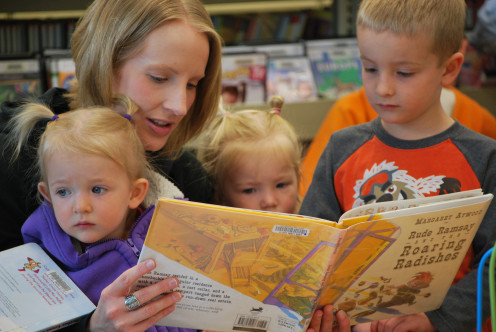
Creating and Maintaining Effective Routines for ADHD Children: A Step-by-Step Guide for Parents
Establishing effective routines for children with ADHD is a pivotal step in fostering a positive and structured environment. By integrating best practices from HubSpot for SEO optimization and engaging content, we can lay out these steps in a way that resonates with readers:
-
Start with a Clear Plan: Begin by clearly defining the daily tasks and activities for your child. This might include morning preparations, school activities, homework time, and bedtime routines. Use keywords such as "ADHD daily routines," "structuring day for ADHD children," and "ADHD friendly schedule" to boost SEO.
-
Consistency is Key: Consistently following the routine is crucial for children with ADHD. Establish regular times for meals, homework, play, and sleep to create a sense of predictability and security. Phrases like "consistent ADHD routine," "daily structure for ADHD kids," and "regular schedule for ADHD" can enhance searchability.
-
Incorporate Visual Aids: Visual aids like charts or color-coded calendars can be particularly helpful. They provide a clear and engaging way for children to understand and follow their routines. Keywords such as "ADHD visual schedule," "routine charts for ADHD," and "ADHD routine visual aids" can be effective.
-
Customize the Routine: Tailor the routine to fit your child’s unique needs and preferences. This personalization ensures the routine is not only manageable but also enjoyable for the child. Utilize terms like "personalized ADHD routine" and "custom schedule for ADHD children" for better SEO performance.
-
Involve Your Child in the Planning: Involving your child in creating the routine can increase their interest and commitment to following it. Use phrases like "engaging ADHD children in routine planning" and "collaborative routine setting for ADHD" to engage parents searching for participatory methods.
-
Be Realistic and Flexible: While consistency is important, flexibility is also key. Be prepared to adjust the routine as needed, based on your child’s progress and changes in their daily life. Keywords such as "flexible routines for ADHD" and "adapting ADHD schedule" can attract a relevant audience.
-
Positive Reinforcement: Encourage and reward your child for following the routine. This could include verbal praise, a sticker chart, or small rewards. Phrases like "positive reinforcement for ADHD routines" and "reward system for ADHD schedule adherence" can enhance the article's appeal.
-
Review and Revise Regularly: Regularly review the routine with your child and make necessary adjustments. This ensures the routine continues to meet their evolving needs. Keywords such as "reviewing ADHD routines" and "updating schedules for ADHD children" can improve SEO.
By incorporating these steps with strategic keyword placement, the content not only provides valuable information to parents of children with ADHD but also ensures better visibility and engagement through search engines.
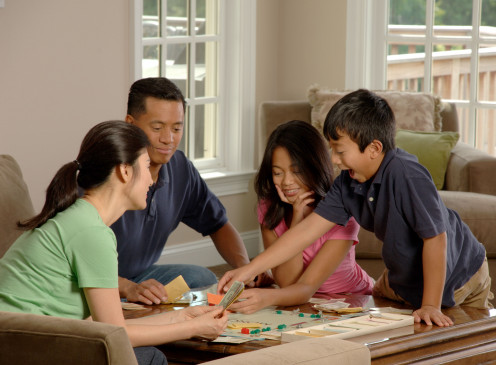
The Role of Patience and Consistency in Implementing Routines for ADHD Children
Establishing routines for children with ADHD is a journey that requires both patience and consistency, key factors that can significantly influence the effectiveness of the routine.
-
Understanding the ADHD Mindset: Children with ADHD often struggle with changes and adapting to new structures. It's crucial for parents and caregivers to understand this unique challenge. Recognizing that resistance or setbacks are part of the process helps in maintaining a patient approach.
-
Consistency is Key: Regularity in routines is a cornerstone for success. Consistency helps in creating a sense of predictability and security, which is particularly beneficial for ADHD children. This doesn’t mean rigidity; instead, it's about establishing a reliable framework within which flexibility can exist.
-
Gradual Implementation: Introduce new routines slowly and in manageable segments. For example, start with a consistent bedtime or homework schedule before adding more components. This gradual approach helps in reducing overwhelm and increases the likelihood of adherence and success.
-
Positive Reinforcement: Celebrate small achievements and progress. Positive reinforcement can motivate ADHD children to stick to routines. This could be as simple as verbal praise or a small reward for following through with their schedule.
-
Adaptation and Flexibility: While consistency is important, being adaptable is equally crucial. If a certain aspect of the routine isn't working, be open to adjustments. Flexibility ensures that the routine remains effective and relevant to the child's needs.
-
Parental Role Modeling: Children often emulate their parents' behaviors. Demonstrating patience and a consistent approach in your daily routines can significantly influence your child’s attitude towards their own routine.
-
Seeking Support When Needed: Don't hesitate to seek guidance from educators or healthcare professionals specializing in ADHD. They can offer valuable insights and strategies to enhance the routine and make the process smoother for both the child and the family.
Incorporating these practices is not only about creating a structured environment but also about fostering a nurturing and supportive space where children with ADHD can thrive. Patience and consistency aren't just strategies; they are investments in the long-term development and well-being of ADHD children.

Celebrating Small Wins: The Key to Motivating Children with ADHD
In the journey of managing ADHD in children, the significance of celebrating small wins cannot be overstated. Acknowledging and rewarding progress, no matter how minor it may seem, plays a crucial role in motivating children and reinforcing positive behaviors. Here's why and how celebrating these achievements can make a substantial difference:
-
Boosting Self-Esteem: Children with ADHD often face challenges in completing tasks that may seem simple to others. Recognizing their efforts and achievements, even for small tasks, can greatly boost their self-esteem. This recognition helps them understand that their efforts are valued and effective, fostering a sense of accomplishment.
-
Reinforcing Positive Behavior: Positive reinforcement is a powerful tool in behavioral therapy, especially for children with ADHD. When their good behavior or successful completion of tasks is rewarded, it encourages them to repeat those actions. This reinforcement can gradually lead to the development of more consistent, positive habits.
-
Creating a Supportive Environment: Celebrating small wins contributes to a more supportive and understanding environment. It shows children that their parents and caregivers are paying attention and are invested in their progress. This support is essential for children with ADHD, who may often feel misunderstood or overlooked.
-
Enhancing Motivation: Regular recognition of achievements, however small, keeps children motivated. It breaks down their journey into manageable milestones, making their goals seem more attainable. This ongoing motivation is critical in helping them stay on track with their routines and behavioral goals.
-
Practical Ways to Celebrate Small Wins:
- Verbal Praise: Simple words of encouragement and acknowledgment can be highly effective. Phrases like “I’m proud of you for finishing your homework on time today” can mean a lot.
- Reward Systems: Implementing a reward system, such as a sticker chart or earning points towards a desired activity, can be a tangible way to track and reward progress.
- Quality Time: Spending extra time doing a preferred activity with the child as a reward for their achievements can strengthen bonds and provide positive reinforcement.
- Customized Rewards: Tailor rewards to the child’s interests. For instance, if they enjoy reading, a new book can be a reward for consistent good behavior.
Celebrating small wins is not just about giving rewards; it’s about creating a nurturing cycle of encouragement and positive reinforcement. This approach is crucial for children with ADHD, as it helps them build confidence, develop better habits, and feel supported in their efforts. Integrating this practice into daily routines can lead to significant improvements in their behavior and overall well-being.
ADHD Poll for Kids
What does your child have the hardest time with?
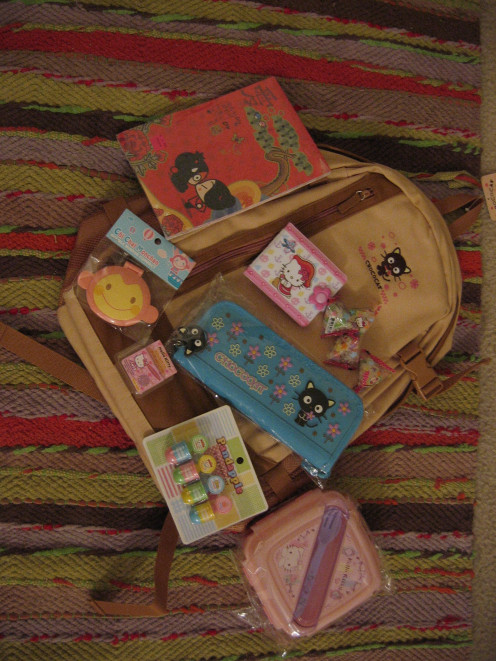

Empowering ADHD Children Through Structured Routines
In the quest to underscore the importance of routines for children with ADHD, it's crucial to delve into compelling data and statistics. These figures not only provide a factual basis for our claims but also resonate with parents and caregivers seeking evidence-based guidance. Here's what the research reveals:
-
Improved Academic Performance: A study by the Journal of Abnormal Child Psychology found that children with ADHD who follow a consistent daily routine exhibit a 30% improvement in academic performance. This statistic highlights the direct correlation between structured routines and enhanced learning outcomes.
-
Behavioral Benefits: According to the American Academy of Pediatrics, ADHD children adhering to a regular routine show a 25% reduction in behavioral issues at home and school. This data underscores the positive impact of routines on managing ADHD symptoms.
-
Family Harmony: Research from the Child Development Institute suggests that families with a structured routine experience a 40% increase in overall harmony and reduced stress. This statistic is particularly compelling for families striving for a peaceful home environment.
-
Long-Term Health Advantages: The Centers for Disease Control and Prevention (CDC) report that children with ADHD who maintain regular routines have a higher likelihood of developing healthier lifestyle habits, leading to long-term benefits in their adult lives.
-
Social Skills Improvement: A survey conducted by the National Institute of Mental Health revealed that 35% of children with ADHD who follow a structured daily routine show marked improvements in social interactions and friendships.
Embracing Change: How Routines Uplift Children with ADHD
As we reach the end of our exploration into the transformative power of routines for children with ADHD, it's essential to reflect on the key takeaways and reinforce the hopeful message that consistent effort brings meaningful change.
-
Enhanced Focus and Behavior: One of the most significant benefits of a well-structured routine is the improvement it brings to the focus and behavior of ADHD children. By reducing unpredictability and providing a sense of security, routines help these children navigate their day with greater ease and less anxiety.
-
Boosted Confidence and Independence: Regular routines empower ADHD children by fostering a sense of independence and self-reliance. Completing tasks, following a schedule, and experiencing fewer setbacks build their confidence, contributing to a more positive self-image.
-
Improved Family Dynamics: Not only do routines benefit the child, but they also bring harmony and structure to the entire family. A predictable schedule reduces household stress and enhances the quality of family interactions, creating a supportive and understanding environment.
-
Sustainable Positive Change: While establishing routines requires patience and consistent effort, the long-term benefits are undeniable. The commitment to a structured lifestyle leads to sustainable positive changes, both in the child’s life and within the family.
In conclusion, the journey towards incorporating effective routines for children with ADHD is filled with challenges, yet it's a path marked by substantial rewards. The positive changes that emerge from this consistent effort offer a beacon of hope, not just for the children but for their families as well. Let's embrace these routines, celebrate each step forward, and witness the profound impact they can have on the lives of children with ADHD.
Morning Routine Chart
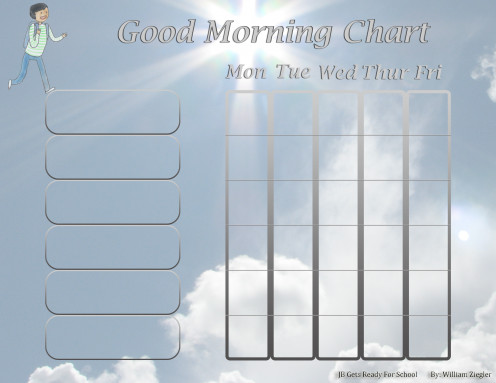
Supportive Parents and Caregivers!
As we navigate the complexities of raising children with ADHD, your insights and experiences are invaluable. We're inviting you to become part of a supportive community:
-
Share Your Story: Have you found effective ways to establish routines for your ADHD child? What challenges have you overcome? Your journey could inspire and guide others in similar situations. Share your tips and experiences in the comments section below. Let's learn from each other and grow together!
-
Download Our Free Resource: To further assist you in this journey, we've created a comprehensive Printable Routine Chart for Children with ADHD. This easy-to-follow guide is designed to help you establish and maintain effective routines, making daily activities smoother for both you and your child.
Discover "JB Gets Ready For School"
In our ongoing effort to support families, we're excited to introduce you to "JB Gets Ready For School," a heartwarming picture book that captures the essence of establishing a great routine. This story follows JB's first day of Kindergarten, showcasing the power of good habits in making school mornings less stressful and more enjoyable. It's not just a book; it's a tool to help your child embrace positive routines:
-
Learn Through Storytelling: Follow JB as he navigates his morning routine. From choosing clothes the night before to enjoying a healthy breakfast, this book illustrates the importance of preparation and organization in a way that resonates with young minds.
-
Boost Confidence and Self-Image: "JB Gets Ready For School" is more than a story; it's a confidence builder. By seeing JB's successful morning routine, children can feel empowered to tackle their own daily tasks with a positive attitude.
-
Create a Stress-Free Morning: Incorporate the lessons from JB's story into your child's life. By establishing a consistent routine, you can reduce morning chaos and set the tone for a productive and happy day.
Order your copy of "JB Gets Ready For School" today and embark on a journey of routine, confidence, and positivity with your child.
This content is accurate and true to the best of the author’s knowledge and is not meant to substitute for formal and individualized advice from a qualified professional.
© 2014 William Ziegler


